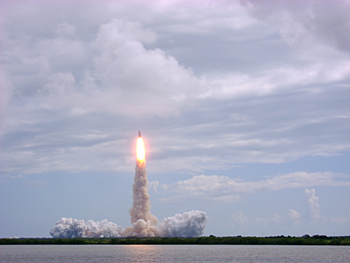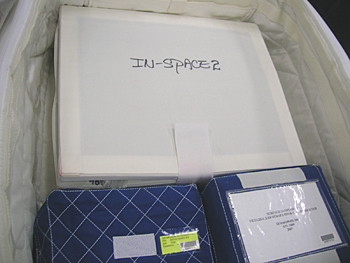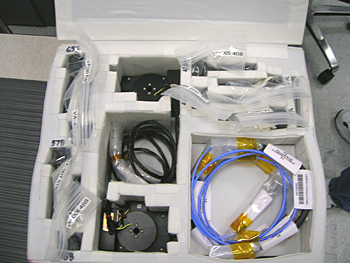
Eric Furst, UD associate professor of chemical engineering, was on hand as the shuttle blasted off with a crew of seven on a two-week mission during which it will rendezvous with the International Space Station.
As part of its payload, Discovery carried with it an experiment on structural and rheological transitions of field-responsive fluids in microgravity prepared by Furst and his students and postdoctoral researchers as part of the InSPACE2 (Investigating the Structure of Paramagnetic Aggregates from Colloidal Emulsions) program.
Furst said a long-standing aim of complex fluid rheology has been to identify the fundamental roles that interactions on nanometer and micrometer length scales play in determining the rheological properties of these materials. Among the many types of complex fluid systems of interest, he said magnetorheological (MR) fluids provide a stunning example.
“MR suspensions exhibit a rapid transition from a liquid- to solid-like state upon the application of a magnetic field,” Furst said. “The MR effect is due to induced interactions between dispersed, micrometer-sized superparamagetic particles. This rheological transition has the potential to provide the basis for technologies, ranging from actively controlled dampers and actuators to magnetically sealed bearings and sensitive stress transducers. Applications to space exploration include potential use in robots, rovers and crew suits, with mobility augmentation, especially for endurance and fatigue countermeasure designs that aid in lifting, moving and supporting loads during extra-vehicular activities.”

Furst watched the space shuttle launch from the guest bleachers, about four miles from the launch pad on Banana Creek. “It's moments like these--and in this case, truly a moment--that really make the job worth it,” Furst said.
Furst said weather was a concern but eventually cleared enough for Kennedy Space Center officials to declare the launch a “go.”
“It really started to get exciting when the clock went to T-9 minutes and counting,” Furst said. “It was pretty much going to happen, unless something malfunctioned and the count was halted. At about T-5 minutes, we sang the national anthem, and the clock kept going, with an announcer marking the minutes.”
Furst said NASA officials announced the main engine start and solid rocket booster ignition. “I saw a large cloud billow out, then a bright flame. As the shuttle rose above the launch tower, three things were immediately striking. I expected sound, but that came somewhat later. Significantly, I hadn't anticipated the brightness of the booster rockets, which was similar to watching a bright welding torch,” he said. “It was hard to look at initially, and the image remained faint even after boarding the return bus 10 minutes later.
“The other surprise was the seemingly labored rise of the ship. Granted, it is going approximately 160 kilometers per hour six seconds after launch and clearing the tower, but the shuttle really seems to rise stubbornly, tentatively on a growing column of flame and smoke. As the shuttle rose, it executed its roll, a very impressive maneuver, and accelerated towards a low cloud layer. The shuttle pierced the clouds, flame visible as an orange ball, and rose past. Many people in the crowd cheered and clapped.”
Furst said that is “when the sound really started hitting. It was the chest-pounding thunder you expect but on top of it were a constant stream of very sharp BAP-BAP-BAP noises. The sound reminded me of those concussion fireworks except in a constant stream. At some point I reached for my ears, wondering if the volume would increase or decrease--the peak volumes must have been close to 100-110 decibels.”

Furst received a bachelor's degree from Carnegie Mellon University and a master's degree and doctorate from Stanford University. He did postdoctoral work at the Institut Curie in Paris.
Article by Neil Thomas

